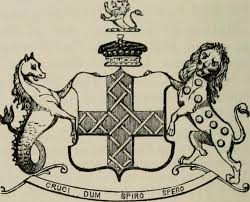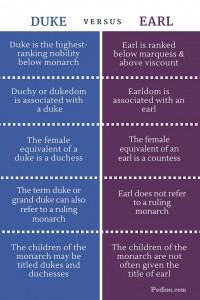Unraveling The Mystery: What Exactly Is A Viscount? A Deep Dive Into British Nobility's Fourth Rank
What is a Viscount? Defining the Rank
At its core, a Viscount is a member of the peerage, the class of powerful nobles in the United Kingdom. Within the British peerage system, it occupies a distinct position: it is the **fourth rank of dignity**, standing directly below an Earl and above a Baron. This means that in the traditional hierarchy, a Viscount is ranked below a Duke, Marquess, and Earl, but above a Baron. The very word "Viscount" offers a clue to its historical meaning. It comes from the Latin word "vicecomes," which literally translates to "deputy count" or "lieutenant of a count." This etymology hints at the original function of this noble title, which we will explore further. When addressing a Viscount, the formal salutation is "My Lord," and they are considered "Right Honourable." For the female equivalent, the wife of a Viscount is known as a Viscountess.A Glimpse into History: The Origin of the Viscount Title
The title of Viscount, as an official rank in the British peerage, has a precise beginning. It was first recorded and created in **1440**. This pivotal moment occurred when Henry VI, King of England and of France, sought to consolidate the titles of the two countries. In doing so, he bestowed the title upon John, Lord Beaumont, making him both Viscount Beaumont in England and Viscount Beaumont in France. This creation for John Beaumont marks the very first viscountcy in British history. Despite this inaugural creation, the title did not immediately become widespread or popular. For a period, it remained an uncommon title, only truly gaining prominence and becoming more widely used until the 17th century. Historically, the role of Viscounts was quite practical and administrative. True to their Latin root "vicecomes," Viscounts traditionally served as deputies to Earls or as local administrators. Their responsibilities were diverse and crucial for local governance. They were often tasked with administering justice, collecting revenues and taxes from subjects, and frequently acted as castellans (governors) of local castles. This functional role highlights that a Viscount was not just a noble; it was a title once given to individuals with significant responsibilities, from enforcing law to managing local affairs.The British Peerage System: Where Viscounts Stand
To fully appreciate the Viscount's place, it's essential to understand the broader structure of the British peerage system, which comprises five main ranks of dignity: 1. **Duke:** The highest rank. 2. **Marquess:** The second highest rank. 3. **Earl:** The third highest rank. 4. **Viscount:** The fourth rank. 5. **Baron:** The lowest rank of the peerage. As we've established, the Viscount sits squarely in the middle, positioned just below an Earl and above a Baron. This clear hierarchy defines their standing within the aristocratic order. Currently, there are approximately **111 to 115 viscountcies extant in the peerages of the British Isles**. It's important to note that while some Viscounts hold this as their primary title, many extant viscountcies are used as courtesy titles. A specifically British custom allows the heir apparent of an Earl or Marquess to be referred to as a Viscount if the second most senior title held by the head of the family is a viscountcy. This means that a young noble might be known as "Viscount [X]" even if their father holds a higher title like an Earl, simply because the viscountcy is the next in line of titles held by the family.Beyond the Title: The Viscounty and Its Holders
The status and any domain held by a Viscount is referred to as a **viscounty**. This term encompasses both the rank itself and, historically, the territory or jurisdiction associated with it. In the case of French Viscounts, the title is sometimes left untranslated as "vicomte," maintaining its original linguistic flavor. Throughout history, Viscounts have played significant roles. For example, Stapleton Cotton, 1st Viscount Combermere, was a distinguished military leader known for his service in the British Army during the Napoleonic Wars. He later served as Governor of Barbados and was a prominent figure in military affairs in the 19th century, showcasing the diverse contributions of individuals holding this title. The British Isles also feature several notable Irish viscountcies, such as Viscount Clontarf and Viscount Baltinglass, created in 1541; Viscount Mountgarret in 1550; and Viscount Decies, created in 1569. These examples highlight the spread and integration of the viscountcy across different parts of the United Kingdom. When it comes to addressing a Viscount, they are typically referred to as "Lord [X]," where [X] is their surname or the territorial designation of their title. Their children also use honorary titles, similar to those of Earls, further cementing their place within the noble structure.Evolution of a Noble Rank
From its origins in 1440 as a functional title for deputies and administrators, the Viscount has evolved into a significant, albeit less common, degree of dignity within the British peerage. While the direct administrative roles of collecting taxes and acting as castellans have largely faded, the title itself endures as a testament to centuries of British history and tradition. The Viscount represents a unique blend of historical utility and modern honorific status. It is a rank that speaks to a time when nobility was intertwined with direct governance and local administration, while also signifying a continuing legacy within one of the world's most enduring aristocratic systems.Summary of the Viscount's Key Aspects:
- **Rank:** The fourth rank of dignity in the British peerage, positioned below an Earl and above a Baron.
- **Origin:** First created in 1440 by King Henry VI for John, Lord Beaumont.
- **Etymology:** Derived from the Latin "vicecomes," meaning "deputy count."
- **Historical Role:** Traditionally served as deputies to Earls, local administrators, deputy sheriffs, responsible for justice, revenue collection, and castle management.
- **Addressing:** Addressed as "My Lord" and considered "Right Honourable." The female equivalent is a Viscountess.
- **Current Status:** Approximately 111-115 viscountcies exist today, with many used as secondary or courtesy titles for heirs.
- **Associated Term:** The status and domain held by a Viscount is called a viscounty.

A Viscount, History of Viscounts, British Peerage System, Duke

A Viscount, History of Viscounts, British Peerage System, Duke

Difference Between Duke and Earl | Monarch, Titles, Ranks of the peerage,